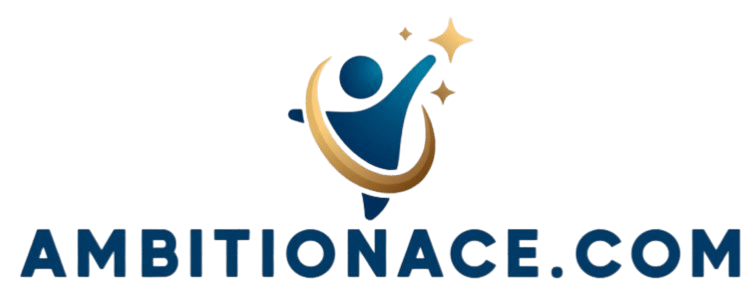How to Conduct a Productivity Audit?
In today s fast-paced work environment, maximizing efficiency is more crucial than ever. A productivity audit serves as a powerful tool for evaluating how resources are utilized and pinpointing areas for improvement.
This guide will walk you through the essentials of a productivity audit, outlining its benefits, the steps for effective implementation, and the tools that can assist you in this endeavor. You’ll also find insights into common pitfalls to avoid, ensuring you harness the full potential of your team.
Dive in to discover how a productivity audit can transform your workflow and drive your success.
Contents
Key Takeaways:

- A productivity audit can help improve efficiency by identifying areas for improvement and implementing changes to reach goals and objectives.
- To conduct a successful productivity audit, collect and analyze data, involve employees, and utilize tools such as software and expert consultants.
- Common mistakes to avoid during a productivity audit include overlooking key areas and not considering employee input, as both can greatly impact the effectiveness of the audit and resulting changes.
Understanding Productivity Audits
Understanding productivity audits is crucial for organizations that seek to enhance employee productivity and streamline operations. A productivity audit delves into workflows, task completion rates, and time allocation to pinpoint inefficiencies, assess performance metrics, and optimize productivity across your teams.
Analyze these elements systematically. This alignment helps both managers and employees maximize output and reach their goals.
What is a Productivity Audit?
A productivity audit is your ticket to a systematic review of workflows and employee performance, designed to reveal inefficiencies and highlight opportunities for enhancement.
This thorough examination dives into key areas such as task delegation, resource utilization, and time management practices. By analyzing performance metrics and utilizing productivity tools, you can pinpoint specific problems that slow down efficiency. Incorporating time audits for productivity as a regular part of your assessments not only helps refine operational strategies but also plays a vital role in measuring employee productivity.
Ultimately, this process offers invaluable insights that align team efforts with your organizational goals, cultivating a culture of continuous improvement and accountability.
Benefits of Conducting a Productivity Audit
A productivity audit unlocks exciting benefits that can supercharge team spirit and performance! It can elevate employee engagement, optimize team collaboration, and substantially enhance overall organizational performance.
By pinpointing productivity gaps and assessing time management skills, you can introduce targeted productivity strategies, streamline processes, and cultivate an environment that encourages continuous improvement.
This proactive approach boosts morale and aligns team objectives with your business goals.
How a Productivity Audit Can Improve Efficiency
A productivity audit can dramatically enhance your efficiency by pinpointing time sinks, optimizing workflows, and elevating overall employee productivity.
Dive into critical performance metrics to discover areas for quick wins, like task completion rates, time allocated to specific projects, and employee engagement levels. If the audit uncovers that certain tasks consistently take longer than expected, you can refine those processes by introducing more effective communication tools or time management strategies.
Regular assessments of employee performance metrics will enable you to conduct targeted training sessions, ensuring your workforce is well-equipped with the skills necessary to excel. This comprehensive approach not only tackles inefficiencies but also nurtures a culture of continuous improvement, ultimately enhancing overall performance.
Start your productivity audit today to transform your team’s efficiency and effectiveness!
Steps to Conducting a Productivity Audit

Conducting a productivity audit involves several essential steps designed to evaluate and elevate your organizational performance. Start by identifying your goals and objectives. Next, learn how to measure your productivity by collecting and analyzing relevant data.
Once you’ve gathered the insights, implement changes to optimize your workflows. By employing effective time-tracking methods which help you see where every minute goes and utilizing productivity tools, you can ensure a thorough approach to performance evaluation and foster a culture of continuous improvement.
Identifying Goals and Objectives
Identifying clear goals and objectives serves as the cornerstone of an effective productivity audit. This will significantly influence your team s objectives and employee performance.
By ensuring these objectives are specific and measurable, you can track progress more effectively. Additionally, it s crucial that these targets align perfectly with the broader ambitions of your organization, creating a harmonious strategy for enhancing overall productivity.
Implementing performance metrics such as meeting deadlines, quality of output, and resource utilization offers you a comprehensive view of where improvements are necessary. This alignment motivates your employees and creates a clear plan, guiding collective efforts toward shared success.
Collecting and Analyzing Data
Collecting and analyzing data is essential in a productivity audit. It provides valuable insights into employee performance and how time is being allocated.
Employing various methods for data collection boosts the accuracy of these insights and helps you identify areas ripe for improvement. For instance, using time tracking software can offer a crystal-clear view of how time is spent across different tasks.
Productivity tools can enhance collaboration and streamline project management efforts. By systematically gathering this data, you can uncover trends and patterns that reveal much about overall performance.
Interpreting these findings means diving into metrics like task completion rates and engagement levels. This allows for a thorough performance evaluation that enables you to make well-informed decisions.
Implementing Changes and Measuring Results
Implementing changes based on a productivity audit can spark a chain reaction of improvement! It can elevate employee engagement to new heights.
To harness the effectiveness of these changes, it s essential to leverage performance metrics that resonate with your organizational goals. Focus on key indicators like employee satisfaction scores, productivity rates, and project turnaround times.
By regularly gathering and analyzing this data, you not only gain insight into the impact of your changes but also enable your team members to take ownership of their work. This collaborative approach nurtures a culture of continuous improvement, making employees feel valued and motivated.
As a result, this drives further engagement and innovation throughout your organization.
Tools and Resources for Conducting a Productivity Audit
Utilizing the right tools and resources is crucial for conducting an effective productivity audit. These tools allow you to gather data and analyze performance metrics with precision.
Whether it’s time tracking software or specialized productivity tools, you have access to management systems specifically designed to streamline workflows and enhance overall performance. These resources facilitate the audit process and support ongoing evaluations.
They help you pinpoint additional areas for improvement.
Software and Apps

You have access to a variety of productivity software options and apps, like Rize and CloudDesk. These tools help streamline your time tracking and management.
They allow you to monitor how much time you invest in various tasks and offer valuable insights into your productivity patterns. For example, Rize provides detailed analytics that highlight specific areas where your time might be slipping away, enabling you to make informed adjustments.
On the other hand, CloudDesk boasts innovative features such as automated logging and customizable reporting. These can significantly elevate your workflow efficiency.
Integrating these productivity solutions can supercharge your daily routine. This ultimately leads to better time management and enhanced overall performance.
Expert Consultants
Engaging expert consultants provides invaluable insights during a productivity audit. This significantly enhances the performance analysis process and overall organizational performance.
These seasoned professionals utilize various methods, including using data to guide decisions, employee feedback mechanisms, and comparing your performance to others in the same industry. They dissect workflows and pinpoint bottlenecks to craft tailored strategies that optimize efficiency.
Their objective perspective offers a comprehensive view, uncovering underlying issues that your in-house teams might overlook. These consultants equip you with tools for continuous improvement, ensuring that the benefits of the audit are not just temporary.
Ultimately, their expertise acts as a catalyst for long-term success, fostering a culture of enhanced productivity and accountability throughout your organization.
Common Mistakes to Avoid During a Productivity Audit
Avoiding common mistakes during your productivity audit is essential for achieving accurate results and fostering employee engagement. You might find pitfalls like overlooking critical areas in performance evaluation or neglecting to consider employee input.
These oversights can create substantial productivity gaps and undermine the effectiveness of your audit. Take these steps to ensure your audit is effective and engaging!
Overlooking Key Areas
Overlooking key areas such as performance metrics and task analysis can significantly undermine the effectiveness of your productivity audit. Many professionals underestimate the importance of accurately tracking these metrics.
This can lead to misguided strategies and inefficient resource allocation. Failing to analyze time management skills compounds this issue and prevents you from recognizing patterns of procrastination or time wastage.
These shortcomings foster employee frustration and can result in missed deadlines and diminished overall performance. By neglecting these crucial components, your organization risks falling into a cycle of ineffectiveness that stifles growth and diminishes morale.
Not Considering Employee Input
Not considering employee input during a productivity audit can lead to disengagement and missed opportunities for improvement. When you overlook the valuable insights your employees possess, you risk alienating your workforce.
Engaging your team fosters a culture of collaboration, where individuals feel their contributions matter. This makes them more likely to take ownership of their roles.
By actively soliciting feedback during the audit process, you can uncover unique perspectives on workflows and identify potential bottlenecks. This approach boosts employee morale and drives collective problem-solving efforts, ultimately paving the way for sustained productivity.
Frequently Asked Questions

What is a productivity audit?
A productivity audit is a process of assessing and analyzing an organization’s efficiency and effectiveness in achieving its goals and objectives. It helps identify areas for improvement so that your organization can work smarter, not harder.
Why conduct a productivity audit?
A productivity audit helps spot areas for improvement. It streamlines processes to boost productivity and profits.
How do I prepare for a productivity audit?
Gather important data and information. Look for measures of success, employee productivity stats, and details about current processes.
Who should be involved in a productivity audit?
Include representatives from various departments. This ensures a well-rounded view of productivity.
What steps are involved in a productivity audit?
First, define your objectives. Then, collect and analyze data, identify improvement areas, and create an action plan.
When should a productivity audit be conducted?
Conduct a productivity audit at least once a year. Do it whenever there are major changes in processes or goals.






